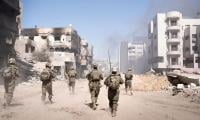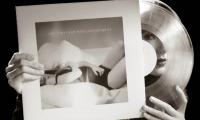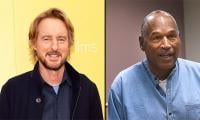Deniers like Nikki Haley refuse to admit that mass poverty exists in their prosperous nation. That would reflect poorly on their capitalist beliefs. But if the skeptics would look at the half of America they don’t care to see, the stark display of destitution might shock them. At least until they invent an excuse to remove it all from their minds.
The US poverty rate in 2016 was between 12.7 and 14.0 percent. But the poverty threshold is based on an outmoded formula from the 1960s. According to the Congressional Research Service (CRS), the threshold should be three times higher today. And it could be even higher if the true nature of poverty is considered.
There is poverty in the diminishing quality of life for Americans who are unable to pay for medical treatment during years of declining health, and instead turn to life-threatening opioid painkillers, readily available in a nation with less than five percent of the world’s population and 30 percent of the world’s opioid consumption. Poverty is the lack of community support in a winner-take-all society; the stress of overwhelming debt; the steady decline of jobs that pay enough to support a family; the inability to afford a move to a desired neighborhood; the deadening impact of inequality on physical and mental well-being. The United Nations describes America as a nation near the bottom of the developed world in safety net support and economic mobility, with the highest infant mortality rate in the developed world, the world’s highest incarceration rate, and the highest obesity levels. Low-income Americans are often surrounded by food deserts, with insufficient access to clean water and sanitation, and with the pollutionlevels of third-world countries. The poorest among us are even susceptible – unbelievably – to rare tropical diseases and once-eradicated scourges like hookworm.
Part of the definition of poverty is ‘the state of being inferior in quality’. The extreme level of inequality in the US is battering the poor with a sense of inferiority. It’s ripping apart once-interdependent communities, and it’s triggering a surge in drug and alcohol and suicide ‘deaths of despair’.
Census data in 2011 showed that nearly half of Americans were in poverty or considered low-income. Since then average wealth for the poorest 50 percent has plummeted 27.5 percent, and average wealth for the poorest 40 percent is virtually ZERO. The median American household has less wealth in current dollars than it did 35 years ago.
According to CareerBuilder, three out of four American workers are living paycheck to paycheck, unable to meet any major expense in health care or home and auto repairs. Charles Schwab says three out of five Americans live paycheck to paycheck. That’s 60 to 75 percent of us.
The United Way ALICE Project has calculated that 43 percent of U.S. households can’t afford a monthly budget that includes housing, food, child care, health care, transportation and a cell phone. The Federal Reserve concurs, estimating that 42 percent of US adults are experiencing a high likelihood of material hardship.
For every $1 in expenses twenty years ago, an American household now pays $1.25. But for every $1 earned twenty years ago, the median household still earns just $1.
Housing, child care, and health costs are crushing Americans. Nearly half of renters are cost-burdened, paying 30 percent or more of their income to their landlords.
Everyone benefits, thankfully, from essential government programs. But as the UN found, the American safety net is less supportive than that of almost all other developed nations. And the richest among us somehow manage to take the greater part of benefits meant for the poor.
This article has been excerpted from: ‘An Update for 2018: More Evidence That Half of Americans Are In or Near Poverty’.
Courtesy: Commondreams.org
Representational image. — APP FileOnce again there is debate surrounding the National Finance Commission Award,...
Pakistani human rights activist and Supreme Court lawyer Asma Jahangir died on February 11, 2018. — AFPAn annual...
Representational image. — APP FileThe meltdown of Pakistan’s economy needs immediate attention. Political unrest...
A health worker administers polio vaccine drops to a child during a door-to-door polio vaccination campaign in Lahore,...
Armed militants of the banned Tehreek-e-Taliban Pakistan pose for a photograph in Orakzai Agency. —...
An aeroplane of the national flag carrier of Pakistan is seen in this file photo. — AFPWhile Pakistan considers...







